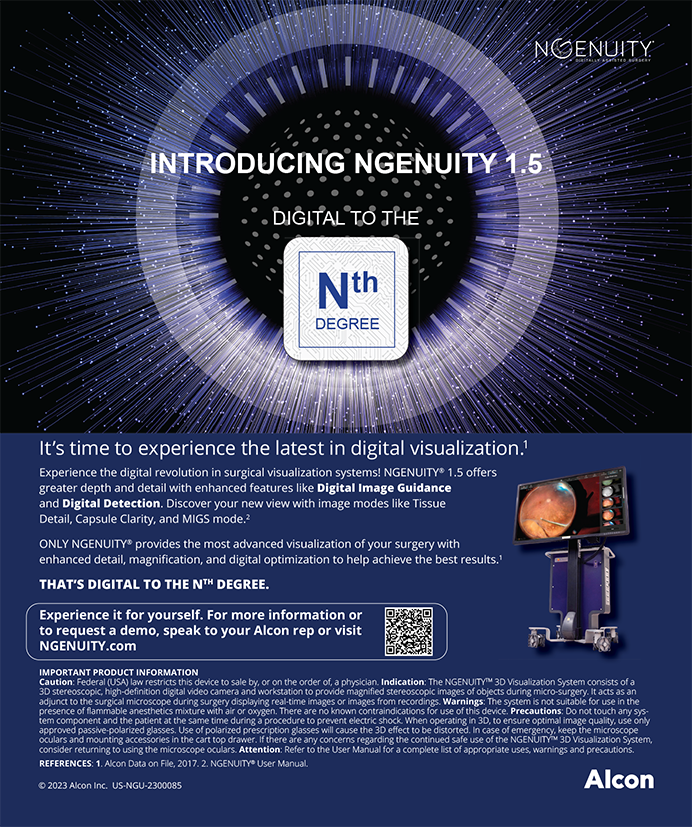
One of the pleasures of working in an academic setting is the opportunity to help train medical students, residents, and fellows. When training young physicians in the diagnosis and management of dry eye disease (DED), I often fall back on my own personal experiences throughout my training, as well as interactions I have had while in practice.
Here are the top five things I like to teach young physicians in my academic setting about caring for patients with DED.
No. 1: Look first. Look at the patient first and then examine the eyes. I will never forget the time when I was a cornea fellow when I eagerly marched into the room to examine a new patient with dry eye symptoms ahead of my attending. The room had been left dark by the technician, and I walked in, took a very brief history of the patient’s symptoms, placed the patient at the slit lamp, looked at her eyes, and left the room to present the patient to my attending. I told my attending that I thought the patient had meibomian gland dysfunction (MGD) and needed treatment with warm compresses, artificial tears, and eyelid hygiene.
My attending then walked into the room, turned on the lights, and looked at the patient. She was a poster child for rosacea. So, while I was not wrong about her MGD, I totally missed the diagnosis of rosacea, which had an effect on her treatment plan and ultimately her outcome.
No. 2: Is it a masquerader? Many patients are referred with a diagnosis of dry eyes but do not actually have DED. This is simply because there are many DED masqueraders, which can include conjunctivochalasis, eyelid laxity, exposure keratopathy, allergic conjunctivitis, and episcleritis, to name a few (see DED Masqueraders for additional conditions that have similar symptoms to DED).
DED Masqueraders
- Allergic Conjunctivitis/Conjunctivochalasis
- Contact Lens–Related Dry Eye
- Corneal Neuralgia
- Episcleritis
- Exposure Keratopathy
- Eyelid Laxity
- Medicamentosa
- Mucus Fishing Syndrome
- Superior Limbic Keratoconjunctivitis
- Thygeson Disease
Additionally, as patients develop cataracts they are often diagnosed with DED, in part because they are straining so hard to see through their cloudy lens that they tend to blink less often. One should also always consider convergence insufficiency in the differential diagnosis of DED. Several times a year, I see patients who come in with a diagnosis of DED but who really have asthenopia and diplopia from undiagnosed convergence insufficiency.
No. 3: Start young. Make sure to look for signs of DED and MGD in patients who may be young and are not necessarily symptomatic. We know that DED is an inflammatory disease and that the long-term consequences of untreated inflammation may lead to significant morbidity, including vision loss. Starting early with diagnosis and treatment can be key in maintaining patients’ quality of life.
When I see an elderly patient with DED, I am often asked, “How did I get this?” I tell these patients that their DED has likely been building up over many years, if not decades. My point is that we should fairly aggressively treat the signs of DED in young patients to prevent the cumulative effect of decades of untreated ocular surface disease (OSD).
No. 4: Educate yourself. The field of DED and OSD is changing rapidly. Especially in an academic setting, it is important to stay up to date with the latest diagnostic modalities and treatment options. Algorithms for the diagnosis and management of DED exist, and these can help to guide you, but you still need to treat each patient individually and customize each treatment plan based on the individual’s findings and needs.
No. 5: Educate your patients. It is important for patients to understand that there is no quick fix in the management of DED and OSD. Patients need to understand the chronicity of the disease process, and the only way to effectively treat them is for you to obtain their buy-in. Without their buy-in and understanding of the reasoning behind each treatment, even the best treatment plans will fail.
CONCLUSION
Great strides have been made in understanding DED and how it affects not only the ocular surface but also surgical outcomes. It is important for those of us who practice at academic institutions to educate the future of our field in proper DED diagnosis and treatment so that the level of care and attention to detail can continue to exceed patients’ expectations.




